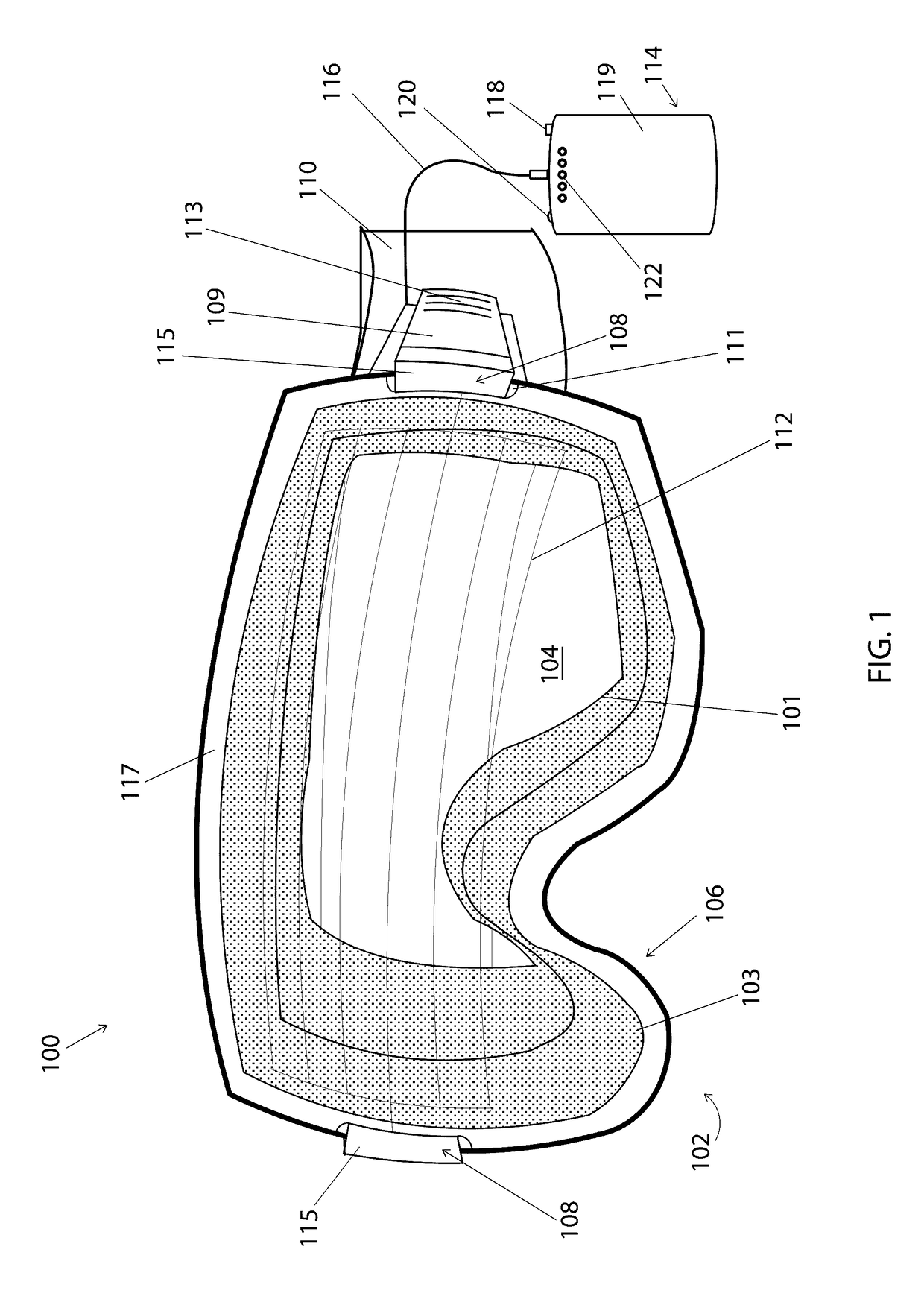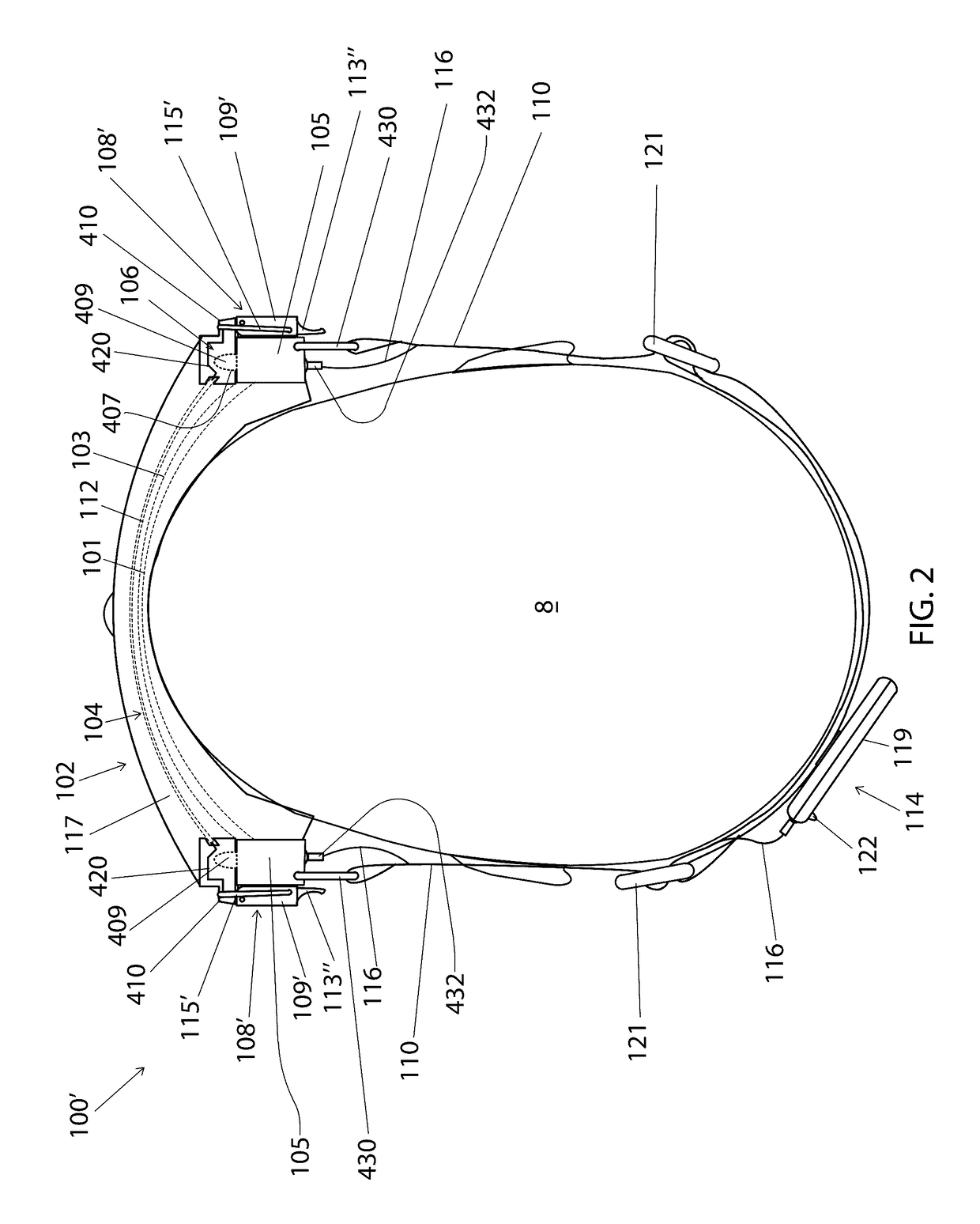Goggle with easily interchangeable lens that is adaptable for heating to prevent fogging
a technology of adaptable lens and goggles, which is applied in the field of goggles, can solve the problems of not providing interchangeable lenses for earlier conventional goggles, requiring replacement of the entire goggles, and much less useful, and achieves the effect of convenient user installation
- Summary
- Abstract
- Description
- Claims
- Application Information
AI Technical Summary
Benefits of technology
Problems solved by technology
Method used
Image
Examples
Embodiment Construction
[0080]Referring to FIG. 1, there are shown interchangeable lens goggle components for an embodiment of an interchangeable lens goggle 100 that comprises a body 102, an easily interchangeable lens 104, a lens-to-body engagement mechanism 106, an optional interconnection means or mechanism 108 and a strap 110 all providing a goggle that enables easy adaptation to varying weather, lighting and goggle fogging conditions.
[0081]Used as an anti-fog goggle 100, the lens 104 of the goggle further comprises resistive-wire anti-fog means 112 that is connected to a water-proof power supply 114 via a power supply cable 116. Referring additionally to FIG. 7, the power supply 114 may be suitably comprised of a lithium-ion, or lithium-poly, battery conventionally used in cell-phones, the battery being housed in a plastic-waterproof case 119 with an O-ring seal 710 and a rotatable clip 701 for attachment to clothing or a goggle strap 110 as shown in FIG. 2. Preferably, the battery 114 includes an on...
PUM
 Login to View More
Login to View More Abstract
Description
Claims
Application Information
 Login to View More
Login to View More - R&D
- Intellectual Property
- Life Sciences
- Materials
- Tech Scout
- Unparalleled Data Quality
- Higher Quality Content
- 60% Fewer Hallucinations
Browse by: Latest US Patents, China's latest patents, Technical Efficacy Thesaurus, Application Domain, Technology Topic, Popular Technical Reports.
© 2025 PatSnap. All rights reserved.Legal|Privacy policy|Modern Slavery Act Transparency Statement|Sitemap|About US| Contact US: help@patsnap.com



